Ivan Grubanov. United Dead Nations

© Serbian Pavilion | Ivan Grubanov
Dal 9 May 2015 al 22 November 2015
Venezia
Luogo: Biennale Giardini / Pad. Serbia
Indirizzo: Giardini
Sito ufficiale: http://www.labiennale.org/
The United Dead Nations project representing the Serbian Pavilion at the 56th International Art Exhibition – La Biennale di Venezia by artist Ivan Grubanov explores the historical and cultural setting of Venice Biennale as the platform for projection and representation of different visions of modernity.
The installation United Dead Nations aims to establish a dialogue on what does the notion of the nation represent in our post-global times by putting in focus the nations that no longer exist as such, but whose ghosts are still conditioning the geo-spheres they had occupied. By doing so, the multifaceted spectrum of desires and conflicts, which the notion of nation embodies, is considered and the questions of nature and permanence of today’s nations are being imposed. Comissioned by the Serbian Ministry of Culture and Information, produced by the Museum of Contemporary Art Belgrade and curated by Lidija Merenik of the Faculty of Philosophy in Belgrade, Grubanov’s work critically investigates the concept of the United Nations and the notion of nation as such.
Grubanov uses the flags of nations that ceased to exist during the 20th century (Austro-Hungarian Empire, Ottoman Empire, USSR, German Democratic Republic, South Vietnam, United Arab Republic, Czechoslovakia, Tibet, Yugoslavia, Gran Colombia) and treats them as painting material: soaks them in chemicals and colors, exposes them to damaging influences, creates imprints of their symbols on clean canvases, produces sculptural forms and ambiental situations. Through an obscure ritual of processing historical material in both conceptual and physical sense, Grubanov will create a 200 m2 floor installation at the Biennial, a “plane of immanence” that demonstrates the ability of art to produce novel modes of connecting historical knowledge with the indiscernible of today. Past, present and future, life and death, art and politics find themselves overlapped in Grubanov’s powerful composition.
The artistic practice of Ivan Grubanov (b. 1976) is marked by constant innovation to the medium of painting and the articulation of historical memory against the contemporary condition. His process-oriented painterly method evolves into a podium for knowledge production, persistently posing challenging questions about social and political realities. Educated at the Belgrade Academy of Fine Arts, the Rijksakademie van beeldende kunsten in Amsterdam, Delfina Studios in London, Casa de Velazquez in Madrid and Katholieke Universiteit Leuven, Ivan Grubanov has established his international career through numerous solo, group, and biennial exhibitions worldwide, as well as many artistic and scholarly awards.
The installation United Dead Nations aims to establish a dialogue on what does the notion of the nation represent in our post-global times by putting in focus the nations that no longer exist as such, but whose ghosts are still conditioning the geo-spheres they had occupied. By doing so, the multifaceted spectrum of desires and conflicts, which the notion of nation embodies, is considered and the questions of nature and permanence of today’s nations are being imposed. Comissioned by the Serbian Ministry of Culture and Information, produced by the Museum of Contemporary Art Belgrade and curated by Lidija Merenik of the Faculty of Philosophy in Belgrade, Grubanov’s work critically investigates the concept of the United Nations and the notion of nation as such.
Grubanov uses the flags of nations that ceased to exist during the 20th century (Austro-Hungarian Empire, Ottoman Empire, USSR, German Democratic Republic, South Vietnam, United Arab Republic, Czechoslovakia, Tibet, Yugoslavia, Gran Colombia) and treats them as painting material: soaks them in chemicals and colors, exposes them to damaging influences, creates imprints of their symbols on clean canvases, produces sculptural forms and ambiental situations. Through an obscure ritual of processing historical material in both conceptual and physical sense, Grubanov will create a 200 m2 floor installation at the Biennial, a “plane of immanence” that demonstrates the ability of art to produce novel modes of connecting historical knowledge with the indiscernible of today. Past, present and future, life and death, art and politics find themselves overlapped in Grubanov’s powerful composition.
The artistic practice of Ivan Grubanov (b. 1976) is marked by constant innovation to the medium of painting and the articulation of historical memory against the contemporary condition. His process-oriented painterly method evolves into a podium for knowledge production, persistently posing challenging questions about social and political realities. Educated at the Belgrade Academy of Fine Arts, the Rijksakademie van beeldende kunsten in Amsterdam, Delfina Studios in London, Casa de Velazquez in Madrid and Katholieke Universiteit Leuven, Ivan Grubanov has established his international career through numerous solo, group, and biennial exhibitions worldwide, as well as many artistic and scholarly awards.
SCARICA IL COMUNICATO IN PDF
COMMENTI

-
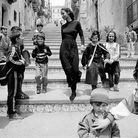 Dal 24 October 2025 al 1 March 2026
Saluzzo | La Castiglia
Dal 24 October 2025 al 1 March 2026
Saluzzo | La Castiglia
Ferdinando Scianna. La moda, la vita
-
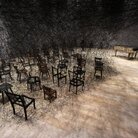 Dal 22 October 2025 al 28 June 2026
Torino | MAO – Museo d'Arte Orientale
Dal 22 October 2025 al 28 June 2026
Torino | MAO – Museo d'Arte Orientale
Chiharu Shiota. The Soul Trembles
-
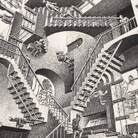 Dal 23 October 2025 al 1 March 2026
Reggio di Calabria | Palazzo della Cultura P. Crupi
Dal 23 October 2025 al 1 March 2026
Reggio di Calabria | Palazzo della Cultura P. Crupi
M.C. Escher
-
 Dal 24 October 2025 al 3 May 2026
Roma | Scuderie del Quirinale
Dal 24 October 2025 al 3 May 2026
Roma | Scuderie del Quirinale
Tesori dei Faraoni
-
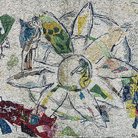 Dal 18 October 2025 al 18 January 2026
Ravenna | MAR – Museo d’Arte della città di Ravenna
Dal 18 October 2025 al 18 January 2026
Ravenna | MAR – Museo d’Arte della città di Ravenna
Chagall in mosaico. Dal progetto all’opera
-
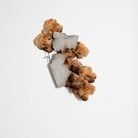 Dal 19 October 2025 al 27 November 2025
Roma | MAXXI Museo nazionale delle arti del XXI secolo
Dal 19 October 2025 al 27 November 2025
Roma | MAXXI Museo nazionale delle arti del XXI secolo
Chris Soal. Spillovers: Notes on a Phenomenological Ecology


